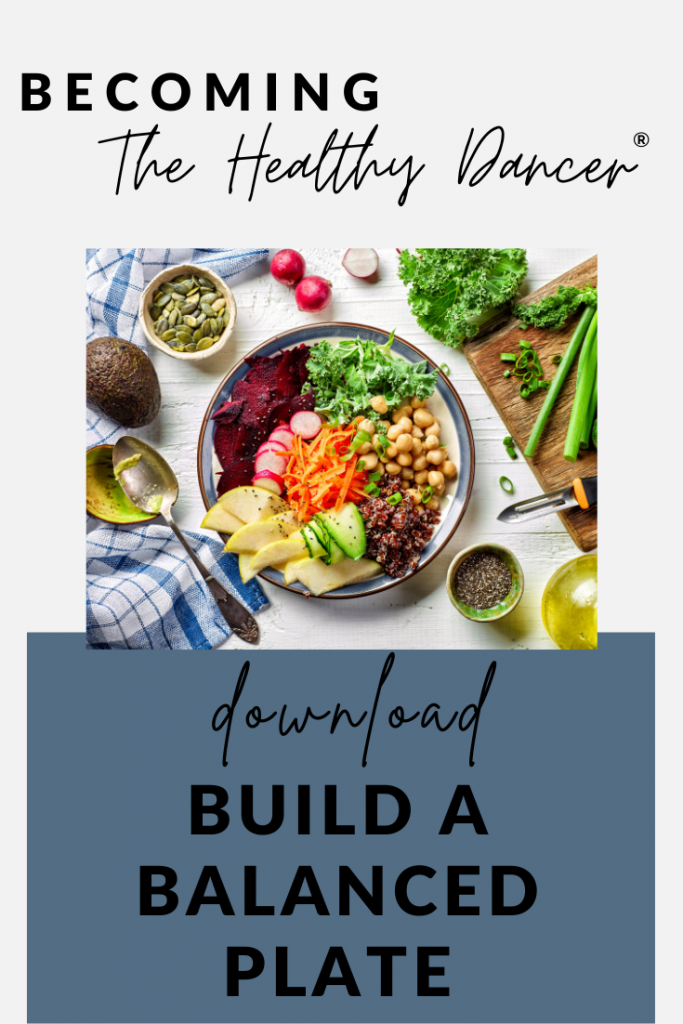Adopting supportive eating habits is paramount for a ballet dancer to train effectively. Despite this, many struggle to nourish their bodies. Among others, food and body ideals increase a ballet dancer’s vulnerability to the detrimental costs of disordered eating.
In this blog post, we’ll uncover why, when compared to other dance genres, many ballet dancers struggle to fuel their bodies. We will also discuss critical strategies to shift behaviors to support consistent and adequate fueling.
Why do ballet dancers struggle with food and nutrition?
There are many reasons why dancers struggle with food and nutrition. Let’s uncover the most common culprits:
Body Image Expectations
Ballet has long been associated with a specific aesthetic ideal characterized by slimness and elongated lines. Dancers, particularly those training in professional or competitive environments, may feel immense pressure to conform to these standards, leading to body image concerns and disordered eating behaviors to attain or maintain a certain physique. When the physical demands of ballet combine with unattainable body ideals and pressures to maintain a thin physique, dancers risk the negative complications associated with energy imbalance.
The same goes for societal attitudes towards food. A dancer’s perceptions of themselves and their bodies result from what might be expected in the studio and at mealtimes. Cultural norms prioritizing “clean” eating, emphasizing thinness, and equating worth with mealtime “discipline” (or “willpower”) contribute to overwhelming body dissatisfaction and food guilt. I’ve previously discussed how the orthorexic identity limits dancers— click here to give it a read.
Intense Schedules
Ballet requires rigorous training involving hours of classes, rehearsals, and performances. Academic coursework adds another layer of complexity to the preprofessional dancer’s schedule. For professionals, side gigs and second jobs are the norm.
Nutrition Misinformation and Myths:
This one’s a biggie. Studios, companies, and schools often lack accurate nutrition education. This educational deficit opens doors to conflicting advice about what constitutes a “healthy” diet or how to fuel their bodies effectively— worsened by social media.
Pressures of Perfection
Perfectionism may drive motivation, but for ballet dancers, perfectionism can orchestrate a journey toward psychological burnout and physical injury. A highly competitive environment can exacerbate stress and anxiety with some dancers turning to food (and on the contrary, food restriction) as a way to cope during periods of heightened stress or performance pressure.
What is a healthy diet for a ballet dancer?
Eating “healthfully” is a broad topic that can be daunting for ballet dancers. The Healthy Dancer® helps ballet dancers identify a middle ground between what is “healthy” and what is “too healthy,” especially as misinformation and “clean” eating lifestyles flood the studio. Let’s delve into the key principles of nourishment that empower ballet dancers to thrive both on and off the stage.
#1: Eat Enough
For ballet dancers, the main goal is that your meal plan provides enough energy to support your body dancing at peak levels. This is your first line of defense in preventing injuries like stress fractures. But how can you assess whether or not you’re eating enough? Here is a complete guide.
Building an adequate nutrition plan often means eating several meals and snacks throughout your day— 3 meals and 2-3 snacks is just a starting point. Priorities may shift depending on your schedule. For most of the year, you’ll want to support your dance training using the tips offered in this article. If you’re entering performance season, then bookmark this article. Aim for meals that encompass a variety of nutrient-dense foods, including proteins for muscle repair, complex carbohydrates for sustained energy, and fats for hormonal balance. A variety of foods is important and will help to increase your intake of a spectrum of nutrients. Here are helpful articles to get you started:
#2: Dismantle your dieting mentality and break your food rules
As a practicing dietitian, I continue to see lots of hype around fad diets and trendy “clean” eating plans. Whether restricting carbs, overdoing the protein, avoiding dairy, or limiting any other food group, these rules may not be as supportive as you think. Side note: I’ve previously debunked why dairy-free and gluten-free diets are inappropriate for dancers (unless a medically diagnosed allergy exists). Here are a few more to help:
- The Impact of Diet Culture on Dancers
- Identifying The Dieting Mentality
- Why Dancers Fear Weight Gain
- What’s The Deal with Height and Weight Charts?
#3: Seek support to prioritize your relationship
Nutrition support from credible sources like registered dietitians remains largely inaccessible to many ballet dancers. There is also an unfortunate notion of stigma attached to seeking support. However, dancers need to understand the benefits. Here’s a good place to start, along with my free 7-day trial of the Healthy Dancer®.
10+ eating tips for ballerinas
Without further adieu, here are 10 actionable tips for ballet dancers to consider for healthy eating:
- Consider pre-performance fueling. Meals and snacks rich in carbohydrates will fuel muscles and provide steady energy. Opt for easily digestible options to avoid discomfort or sluggishness.
- Make time for recovery nutrition. A balance of carbohydrates and protein replenish glycogen and repair muscle tissue.
- Get over your fear of carbs—they fuel your movement. On the cellular level, your body prefers to burn carbs for energy, especially during intense movement. Complex carbohydrates from plant-based sources like oatmeal, quinoa, faro, and grain-based bread can increase your meal’s staying power. These complex carbohydrates allow for a more stabilized energy release, keeping your blood sugar and fuel levels burning for longer.
- Get over your fear of fat. The specific unsaturated fats found in avocadoes, nuts, and oils reduce the inflammation your body endures from dance. Seeds are a great source of zinc, which acts as a structural component of cells helping to protect against oxidative stress. Furthermore, walnuts, hazelnuts, almonds, cashews, peanuts, sunflower seeds, sesame seeds, flax, and natural nut butter are great sources of vitamin E.
- Add colorful produce! A natural build-up of inflammation occurs with intense dancing. Counteract this by including a variety of colorful produce in your day. For example, a rainbow of fruits contains compounds like vitamins C, E, and beta-carotene to counter inflammatory damage.
- Hydrate. Sip water throughout the day and replenish fluids lost through sweat with electrolyte-rich beverages during intense sessions.
- When possible, try mindful eating. Savor each bite, listen to their body’s hunger and fullness cues, and avoid distractions such as screens or stress during meal times.
- Honor cravings. Personal enjoyment is key to long-lasting healthy habits. If you’re craving cookies, consider a balanced meal before the show and enjoy cookies as a post-show snack. Click here to download a free guide for 20+ healthy snacks (specifically for dancers).
- Practice unconditional permission as you continue to break food rules.
- Rely on The Healthy Dancer® Food Flexibility algorithm for actionable steps.
- Prioritize realistic goals and remember that restrictive rules are unsustainable.
Quick Snacks to Optimize A Ballerina’s Diet
- Tuna Sandwich: Create a protein-packed tuna salad by mixing tuna with mayo or a dollop of whole milk yogurt. Add chopped celery and dill. Sprinkle salt and pepper to taste, and spread on 2 slices of toasted whole grain bread.
- Build a snack box with whole grain crackers and hummus or guacamole. Add cherry tomatoes and other freshly cut veggies to the mix.
- Pack a bar and your favorite trail mix.




